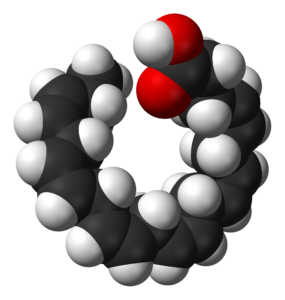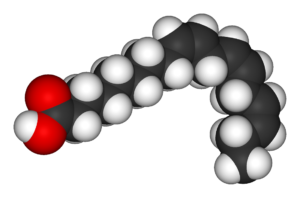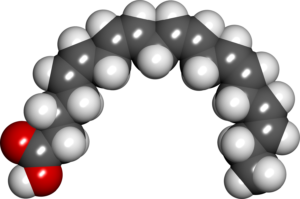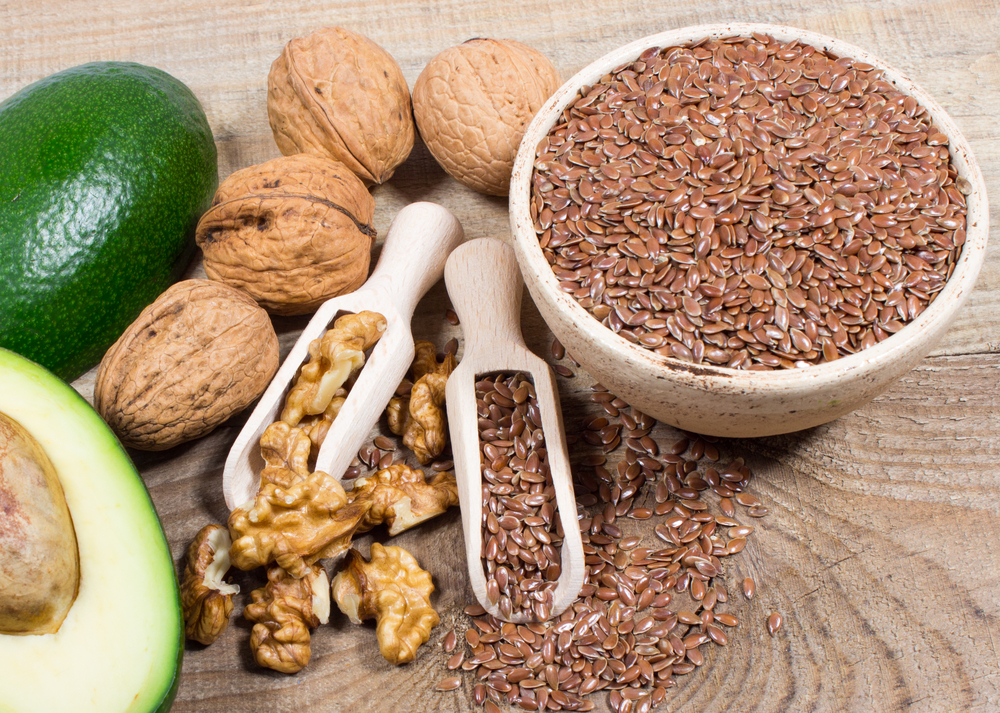The importance Omega-3 essential fatty acids in the human diet is becoming more familiar to all of us, especially those of us in the health education field. Many of us are also aware of Omega-6 essential fatty acids.
A compound is essential when the body doesn’t make it. We have to eat it!
It turns out that both Omega-3s and 6s are, to some degree, essential to our health, and we require approximately a 1:3 ratio of them (one part Omega-3 to three parts of the more common Omega-6).
Omega-3 fatty acids (Omega-3s) are anti-inflammatory. They also improve the immune response, improve cellular membrane health and transportation of nutrients, and decrease blood clotting.
Omega-6 fatty acids (Omega-6s) may do the opposite: boost inflammation, reduce cellular membrane transportation, and thicken the blood.
You will hear far more about Omega-3s and health than Omega-6s. Read on and you’ll see why.
Three Omega-3s
**Note: (Yes, there are THREE omega-3s!) The three main Omega-3 fatty acids (in order of importance) are:
- DHA (DocosaHexaenoic Acid): Marine source (comes from fish, fish oil, algae, algae oil, and other marine life). DHA is a critical nutrient for a healthy nervous system. It is also an anti-inflammatory and heart- protective compound. Additionally, DHA is also purported to increase beauty, improve immunity in children, and is associated with longevity.
- ALA (Alpha-Linolenic Acid): Terrestrial source (comes from plants). ALA is known primarily as a heart-protective and anti-inflammatory fatty acid.
- EPA (EicosaPentaenoic Acid): Marine source (comes from fish, fish oil, very specific algae and algae oil, as well as other marine life). EPA is an anti-inflammatory and heart-protective compound that may also act as a neurotransmitter, thus improving overall nervous system health.
Of these three, two of them (EPA and DHA) are actually what the human body requires for neurological health. The other Omega-3 is plant-based ALA. The body must convert ALA to EPA and DHA to be of much use by the nervous system. Plant-based ALA is therefore considered a poor substitute for marine-sourced EPA and DHA. Ultimately, all three are required.

DHA Molecular Structure.

ALA Molecular Structure

EPA Molecular Structure
Omega-3 vs. Omega-6
The balance of Omega-3 fats to Omega-6 fats in your diet is what determines the overall effect of Omega-3s on your health–good, bad or indifferent. You can look up the actual content of both Omega-3 and its antagonist, Omega-6 for just about every food out there, and it is good to know this ratio for the major foods you eat in your diet.
Most of us eat way too much Omega 6 and thus have a low functional amount of Omega-3. Grain-derived foods and bread, for example, tend to be high in Omega-6. The average person in the Western world gets as much as 20 times more Omega-6 than Omega-3 in her/his diet (a 1:20 ratio versus a 1:3 recommended ratio). It is actually difficult to avoid Omega 6s, so in most cases it is easiest to eat or supplement with more Omega-3s to get the ratio back to 1:3 (1 part Omega-3 to 3 parts Omega-6).
[Image Credit: https://www.kratomiq.com/]
In real-world terms, we would need to eat about 4 large salmon fillets plus hemp seed oil daily (all loaded with Omega-3s) to balance out our typical Omega-6 intake. This translates into 1,000-1,500 mg of fish oil (or algae oil for vegans and vegetarians) a day plus hempseed oil.
Nannochloropsis gaditana—a marine phytoplankton or algae that is rich in the Omega 3 Fatty acid: DHA.
What foods contain Omega-6 fatty acids? Well, you find them primarily in grains, vegetable seeds, nuts, and the processed oils that contain them. Vegetable oils (safflower oil, sunflower oil, corn oil, etc.) contain too much Omega-6; however, this is not true for all seeds or nuts. For example, chia seeds, hemp, and walnuts are high in Omega-3 fatty acids instead of Omega-6 fatty acids.
Improving the Omega-3 to Omega-6 Ratio
Keep in mind certain healthy foods like almonds and Haas avocados are major sources of Omega-6 fats and can greatly skew your Omega-3 to Omega-6 ratio in the wrong direction. Make sure you eat berries and ALA-rich seeds like hemp and chia, as well as take Omega-3 supplements containing DHA and EPA in order to create a favorable Omega-3 intake.
Again, we could focus on avoiding foods too rich in Omega-6 and eating a lot more fish, but there are some problems there as well. Some of us (like me), are vegetarians and do not want to kill fish. In addition, most fish contain a fair amount of toxins. Plastic derivatives and heavy metals are sadly common inhabitants in our oceans and our marine life. True quality fish oils must remove as much of these toxins as possible and carry the certification of “pharmaceutical grade.”
Pictured above: A pharmaceutical-grade fish oil processing facility.
Plant-based Omega-3s and marine (algae and seaweed) oils are reasonable options, but they too come from oceans and are often not purified. In addition, if you take Omega-3s as supplements, make sure they have a balanced amount of EPA and DHA. Many contain mostly DHA and little, if any, EPA.
Paleo diet enthusiasts often ask me if grass-fed, free-range animal meats are also decent sources of Omega-3s. The answer is generally yes. Grain-fed (usually corn-fed) animal meats, on the other hand, are very poor sources of Omega-3 and large reservoirs of Omega-6.
The bottom line is to remember to get enough Omega-3s in the form of marine-sourced EPA and DHA as well as terrestrial ALA. If you are getting enough Omega-3s, you do not need to obsess about Omega-6s.
Summary of Recommendations
Recommended Vegan Supplemental DHA: Cymbiotika’s The Omega DHA
For the right balance of a spectrum of omega essential fatty acids, try Global Healing’s Omega 3-6-7-9.
ALA Sources: hempseed, hempseed oil, chia, chia seed oil, evening primrose oil, clary sage oil, walnuts, berries, and flaxseed. (Consume flaxseed in moderation as flax contains a high amount of phytoestrogens that could influence hormones.)
DHA and EPA Sources: cold-water fish, fish oils (1,000-1,500 mg), algae (ex. AFA blue-green algae), algae oil (1,000-1,500 mg)






